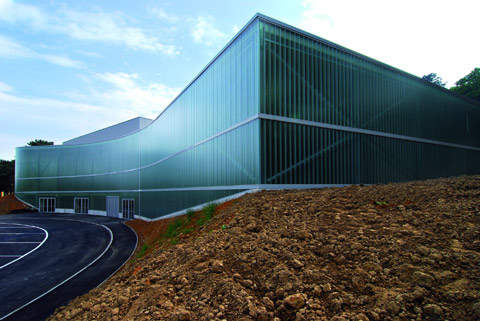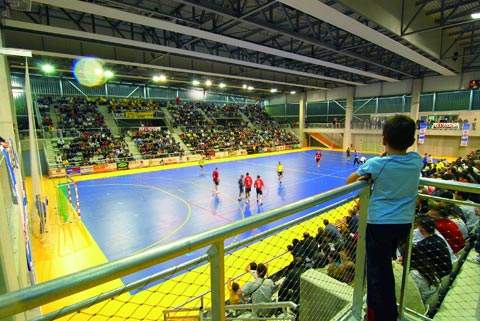The Lighthouse is a sports and events complex located in Belfort, France. The facility was conceived by the City of Belfort and SODEB. The complex serves as a gathering place for cultural and sport events.
The facility was designed by the architectural firm Archi5 in collaboration with Borja Huidobro. It was constructed from April 2005 to May 2008. The complex was shortlisted for the World Architecture Festival awards in 2008.
Design
Conceived as a powerful landmark, the new Lighthouse building establishes a strong relationship with the majestic skyline of the nearby Vosges mountains and the Belfort Castel. The facility assumes its role as a public building and urban catalyst, a place of centrality, gatherings, meetings, sport and cultural events.
The design of the new building creates a strong contrast to the existing stone walls. Recalling the fluidity and the dynamic of sports activities, the façade of the sports arena makes a flexible and generous movement through the landscape. Convex and concave folds react to the existing straight lines.
The envelope of the building, realised in translucent glass with a smooth and crystalline quality, picks up the subtle colouring of the natural light, the sky and the landscape. At night the building is transformed into a bright lighthouse, fully expressing the events taking place inside.
The Lighthouse and the land
The building is firmly anchored to the hillside, the glass skin is cut to fit perfectly in the artificial topography, in the same time the glass ribbon seems detached, almost floating over the pre-existing fortification. The new structure seams to have always been there, responding to the logic of the site and in the same time it appears as something as light and ephemeral as a circus tent.
The building expresses two aspects of sport activities, on one hand the discipline and the rigour, on the other the playful sensuality through the contrast between the orthogonal geometry of the playing field, and the free lines of the envelope. The glass ribbon enlaces the programmatic activities, creating compressions and expansions between the halls and the skin.
The main sports hall is the heart of the complex, it is served by a public circulation directly open towards the playing field. By positioning this space around the hall, it forms an open liaison; an intermediary layer between the hall and the city. The stands are concentrated on the two long sides of the playing field, giving a more dramatic section and intensity to the space.
In this way the two short sides stay open towards the entrance hall and the public circulation, making place for
standing viewers with a different, fluid and informal perception of the game.
The proximity between the players and the public aims to dissolve the traditional barriers between those who play and those who watch.






